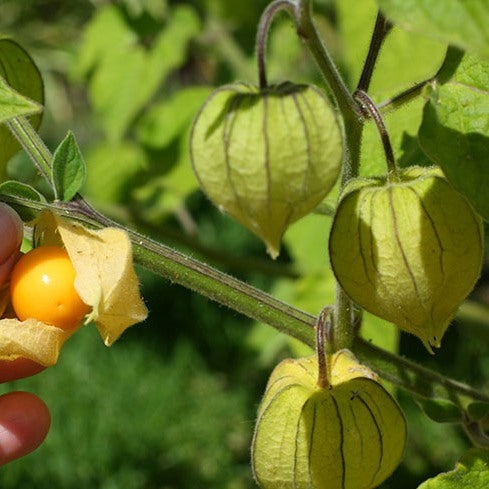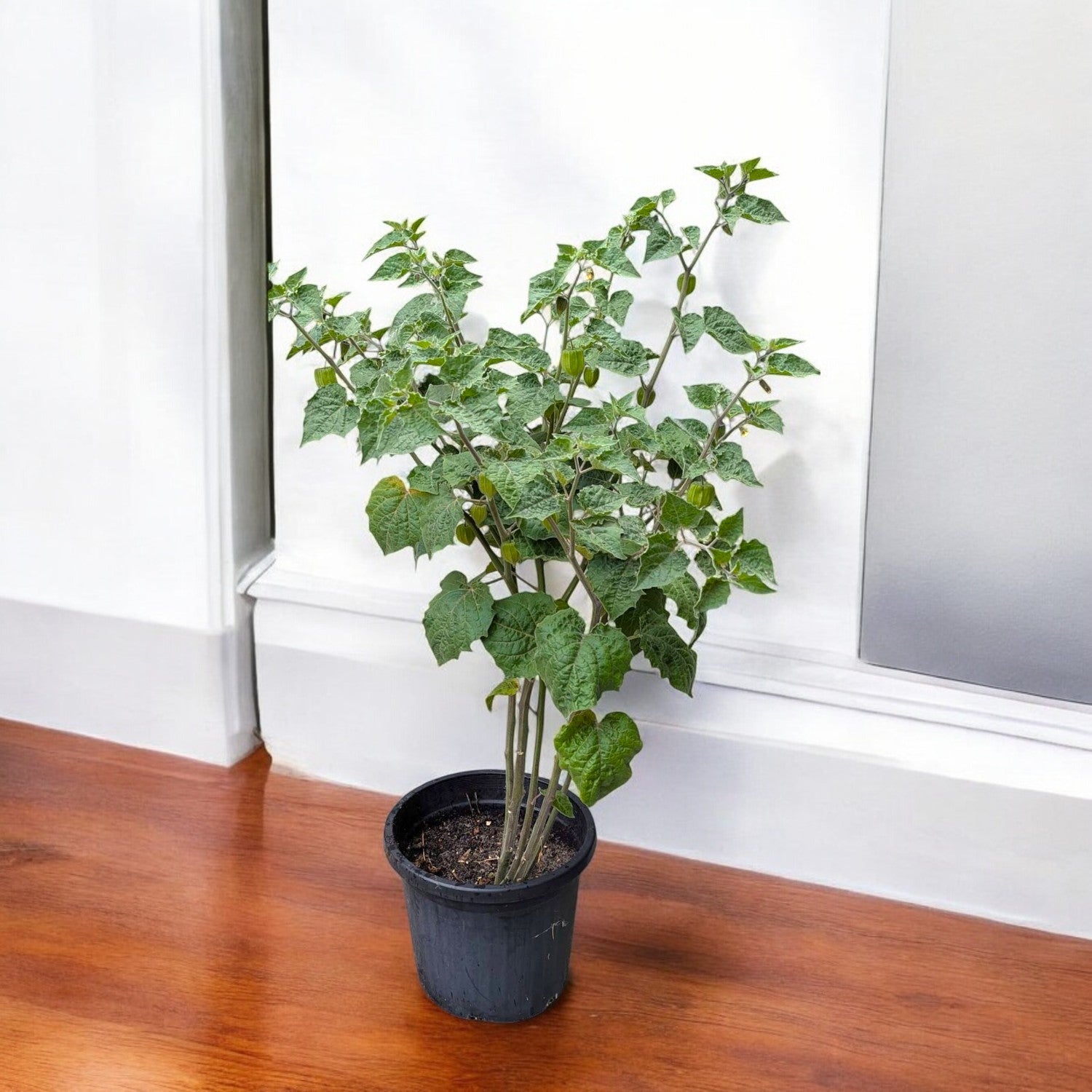

Cape Gooseberry Plant – Physalis Peruviana
Basic Product Details
- Scientific Name: Physalis peruviana
- Common Names: Cape Gooseberry, Golden Berry, Rasbhari, Peruvian Groundcherry
- Plant Height: 12-24 inches (approximately)
- Pot Size: 5-6 inch nursery pot
- Plant Type: Perennial fruiting shrub
- Soil Type: Well-draining, sandy-loamy soil with organic matter
- Sunlight Requirement: Full sunlight (6-8 hours daily)
Product Overview
The Cape Gooseberry Plant (Physalis peruviana) is a fast-growing, fruit-bearing plant known for its sweet, tangy golden berries enclosed in a papery husk. Native to South America, it is widely grown for its nutritional benefits, medicinal uses, and ornamental appeal. This low-maintenance plant thrives in tropical and subtropical climates, making it an ideal choice for home gardens, container gardening, and small farms.
Features and Characteristics
Growth Habit
- Grows as a small, bushy shrub, reaching up to 3-4 feet in height.
- Has soft, heart-shaped leaves and produces small yellow flowers.
- Fruits develop inside delicate, papery husks, resembling small lanterns.
Fruits
- Round, bright orange berries with a sweet-tart flavor.
- Rich in Vitamin C, antioxidants, and dietary fiber.
- Can be eaten fresh, dried, or processed into jams, sauces, and desserts.
Uses of Cape Gooseberry
Culinary Uses
- Consumed fresh as a healthy snack.
- Used in fruit salads, jams, chutneys, and smoothies.
- Can be dried and eaten like raisins.
- Often used as a garnish for cakes and desserts.
Medicinal & Health Benefits
- Boosts immunity with high Vitamin C content.
- Supports eye health with beta-carotene and antioxidants.
- Aids digestion due to its fiber-rich nature.
- Helps regulate blood sugar levels.
Care Tips
Light
- Requires full sunlight (6-8 hours daily) for the best fruit yield.
Watering
- Water 2-3 times a week, keeping the soil slightly moist but not soggy.
- Reduce watering in cold or rainy seasons.
Soil & Fertilizer
- Prefers well-drained, sandy-loamy soil with organic compost.
- Apply balanced NPK fertilizer (10-10-10) every month for better growth.
Pruning
- Trim dead or weak branches to encourage bushy growth and improve airflow.
- Regular pruning helps increase fruit production.
Placement Suggestions
- Ideal for home gardens, terrace gardens, and balcony planters.
- Can be grown in large pots (12-15 inches wide).
- Suitable for tropical, subtropical, and mild temperate climates.
Common Questions and Answers About Cape Gooseberry
How long does it take for Cape Gooseberry to produce fruit?
- It starts fruiting within 4-6 months after planting.
Can I grow Cape Gooseberry in a pot?
- Yes, it grows well in large containers with good drainage.
What is the best season to plant Cape Gooseberry?
- Best planted in spring or early monsoon.
How often should I water the plant?
- Water 2-3 times a week, keeping the soil evenly moist.
What are common pests and diseases?
- Aphids and whiteflies can attack the plant; use neem oil spray for prevention.
When is the best time to harvest Cape Gooseberry?
- Harvest when the husk turns light brown and the fruit is golden yellow.
The Cape Gooseberry Plant is an easy-to-grow, highly nutritious fruiting plant that enhances your garden and diet. Get yours today and enjoy fresh, homegrown golden berries!
FAQs:
What is the Return Policy?
This product is Not Returnable. It may be replaced or refunded in case of damage or defective condition on a case to case basis.
How to cancel my order?
Cancellation for Live Plants is allowed before the dispatched. You can request cancellation through Your Orders page or by contacting customer service within that time.
What if i received damage product?
If a product is received in a damaged or defective condition, you need to contact the customer service within 1 days of delivery. Free of cost replacement or refund claim is available to you.



